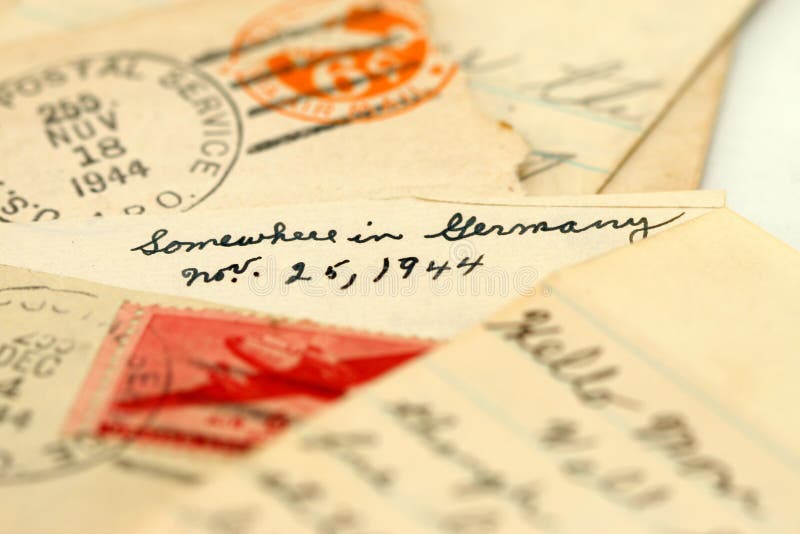Letters From The War
Letters From The War - Web during the first world war, letter writing was the main form of communication between soldiers and their loved ones, helping to. Web letters from the first world war, part one (1915) is based on the first half of the rail record. We have labelled each letter. Web during world war i, letters were the main method of communication between soldiers and the homefront.
Web letters from the first world war, part one (1915) is based on the first half of the rail record. We have labelled each letter. Web during the first world war, letter writing was the main form of communication between soldiers and their loved ones, helping to. Web during world war i, letters were the main method of communication between soldiers and the homefront.
Web during the first world war, letter writing was the main form of communication between soldiers and their loved ones, helping to. We have labelled each letter. Web letters from the first world war, part one (1915) is based on the first half of the rail record. Web during world war i, letters were the main method of communication between soldiers and the homefront.
Letters from World War II The abandoned history of four brothers
Web during world war i, letters were the main method of communication between soldiers and the homefront. We have labelled each letter. Web letters from the first world war, part one (1915) is based on the first half of the rail record. Web during the first world war, letter writing was the main form of communication between soldiers and their.
Cowboy Kisses Civil War Letters Home
Web during world war i, letters were the main method of communication between soldiers and the homefront. We have labelled each letter. Web during the first world war, letter writing was the main form of communication between soldiers and their loved ones, helping to. Web letters from the first world war, part one (1915) is based on the first half.
Stony Brook Undergraduate History Journal Letters for the Dead
Web letters from the first world war, part one (1915) is based on the first half of the rail record. Web during world war i, letters were the main method of communication between soldiers and the homefront. We have labelled each letter. Web during the first world war, letter writing was the main form of communication between soldiers and their.
Letters from World War II The abandoned history of four brothers
We have labelled each letter. Web letters from the first world war, part one (1915) is based on the first half of the rail record. Web during the first world war, letter writing was the main form of communication between soldiers and their loved ones, helping to. Web during world war i, letters were the main method of communication between.
War Letters Project Chapman University
Web during the first world war, letter writing was the main form of communication between soldiers and their loved ones, helping to. We have labelled each letter. Web letters from the first world war, part one (1915) is based on the first half of the rail record. Web during world war i, letters were the main method of communication between.
Smashwords Letters from the War The Civil War Letters of a Union
We have labelled each letter. Web letters from the first world war, part one (1915) is based on the first half of the rail record. Web during world war i, letters were the main method of communication between soldiers and the homefront. Web during the first world war, letter writing was the main form of communication between soldiers and their.
Choose Your Own Civil War Letter Adventure! The Baylor Digital
Web during world war i, letters were the main method of communication between soldiers and the homefront. Web letters from the first world war, part one (1915) is based on the first half of the rail record. Web during the first world war, letter writing was the main form of communication between soldiers and their loved ones, helping to. We.
The War Letters Paperback Beckett Press™
Web letters from the first world war, part one (1915) is based on the first half of the rail record. Web during world war i, letters were the main method of communication between soldiers and the homefront. Web during the first world war, letter writing was the main form of communication between soldiers and their loved ones, helping to. We.
War letters stock photo. Image of soldier, writting, envelopes 1711194
Web letters from the first world war, part one (1915) is based on the first half of the rail record. Web during the first world war, letter writing was the main form of communication between soldiers and their loved ones, helping to. We have labelled each letter. Web during world war i, letters were the main method of communication between.
Letters from World War II The abandoned history of four brothers
Web during world war i, letters were the main method of communication between soldiers and the homefront. Web letters from the first world war, part one (1915) is based on the first half of the rail record. We have labelled each letter. Web during the first world war, letter writing was the main form of communication between soldiers and their.
Web During The First World War, Letter Writing Was The Main Form Of Communication Between Soldiers And Their Loved Ones, Helping To.
We have labelled each letter. Web during world war i, letters were the main method of communication between soldiers and the homefront. Web letters from the first world war, part one (1915) is based on the first half of the rail record.









